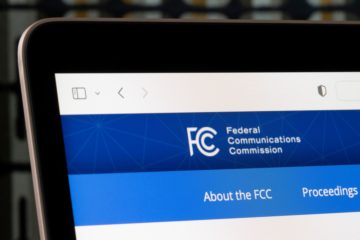Market Institute President Charles Sauer has a new article up at the Washington Examiner on how the United States Patent and Trademark Office has empowered innovation the last 4 years.
President Trump’s legacy will be something that is debated for years to come, but his administration did have some redeeming qualities. No, it wasn’t his bombastic and delusional personality. It wasn’t his Twitter rants. It wasn’t his racially tinged statements. It definitely wasn’t his possible calls for treason and insurrection. However, in an area that Trump largely left alone (and allowed his chosen leader to make quiet progress), there was significant improvement made: promoting innovation in the United States.
Because of Trump’s leadership style (micromanagerial), he could only focus on a few things at a time. In many ways, that was a bad thing, but in fact, it worked to the country’s advantage in a few cases as well. For instance, while Trump was busy waging a trade war with China that he couldn’t win, the leader of the U.S. Patent and Trademark Office was quietly bringing back the thrill of invention and giving us a chance to take on China with offense instead of defense.
Director Andre Iancu quietly, faithfully, and steadfastly led the Patent Office away from attacking innovators back toward defending and promoting innovators and inventors. In fact, in the first speech that I ever heard him deliver, he succinctly laid out his plan, and his No. 1 priority was to change the way that inventors are talked about, discussed, and thought of.
In Washington, D.C., inventors were almost across the board considered trolls when he took office. Even universities were lumped into this derogatory grouping. During the Obama administration, the Patent Office was headed by a person who actively sought to remove patents from inventors and fanned the flames of dialogue attacking inventors. She had cases reheard when intellectual property wasn’t removed from inventors. She promoted anti-patent legislation. She made innovation harder. And she filed briefs against inventors (in which the inventor eventually came out victorious).
Iancu took a different path.
When Iancu took office, he entered a market where the smallest inventors were bitter, angry, and depressed and the biggest innovators were just scraping along and dealing with a broken system in the best way that they knew: the courts. In fact, early into his tenure, a few inventors actually gathered at the Patent Office to set their patents on fire to show the leaders what their paper was worth.
Iancu heard them. Actually, he heard everyone. He met with anyone who requested a meeting for months on end to start his journey and basically maintained that open door throughout his time in the office. He met with small inventors, as seen on TV inventors, large research and development firms, thinkers, lawyers, and tech giants. Iancu supported inventors, but like all good leaders, he also understood that the system both needed to work for everyone and that slow, well-considered moves would be more successful than brash changes without regard to the fallout.
Iancu hired good people, he was active, and he cared. I have written about this several times now, but he even visited my kindergartner’s class to talk to them about patents and look at all of their inventions — made of cardboard, tape, school paint, love, and a little luck. For the most part, his staff have loved working for him and showed it by working diligently day, night, and on the weekends to make the office a better place. I saw staff members of the Patent Office at small events in Wyoming, at startup events in Kansas, and even at a local Girl Scout event. They were all over the place because they believed in their boss.
Read the full article by Charles Sauer at the Washington Examiner by clicking here.


